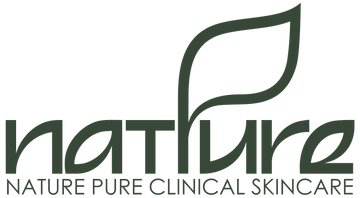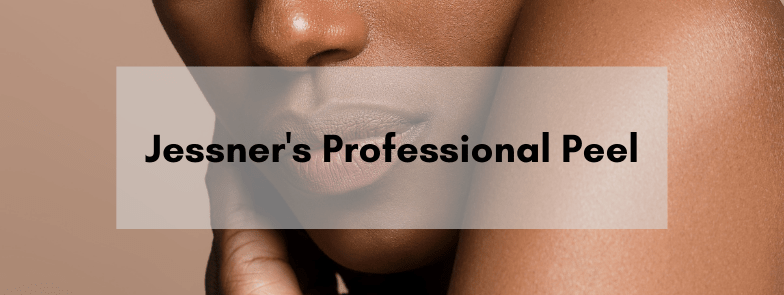 (14% Resorcinol 14% Salicylic Acid 14% Lactic Acid)
(14% Resorcinol 14% Salicylic Acid 14% Lactic Acid)
pH 2.0
This professional-grade medium-depth peel provides a solution for pore congestion, acne, deep lines and wrinkles, hyperpigmentation and can even help with scarring.
INDICATIONS: This is a medium depth peel. It is most beneficial for clients with skin damage and cystic acne. The procedure is not recommended for anyone with overly dry or pigmented skin.
If the skin has melasma or has severe pigmentation it is recommended to treat skin with skin lightening products prior to peel procedure which include Skin Lightening Serum for localized dark spots and Revitalizing Fruit Complex, Anti-Aging Revitalizer or Stem Cells Youthful Tissue Rejuvenator for the entire face.
CONTRAINDICATIONS: Chemical peels should be avoided if client intends to have excessive sun exposure. Has active Herpes Simplex, Warts, history of Keloid scarring, or has had any type of recent facial surgical procedures. Clients should not have a chemical peel if they have used Accutane in the last year (it will increase chances of scarring). Treatment should be avoided if pregnant, lactating, have an aspirin allergy, have any auto immune diseases, prior peel sensitivities, seborrheic dermatitis, collagen disease, atopic, eczema, have had any recent radioactive or Chemotherapy treatments, have sunburn, windburn or broken skin or have recently waxed or had recently used a depilatory (hair removing) product.
PEEL PREPERATION: For best results, it is necessary to follow the recommended skin care regimen to prepare the skin’s surface, and even out the skin tone itself. Refer to Seasonal Rejuvenation Home System. This will make the peel more effective and will make skin less likely to hyper-pigment. It is critical the client has the Soy Doctor® Ultralight Moisture Screen SPF 30, which has broad-spectrum (UVA & UVB SPF) to protect skin before and after the peel. The Hippophae Hydration Balm is mandatory to help skin heal after the peel, it is rich with emu oil, hippophae berry oil, shea butter, cocoa, beeswax and other therapeutic extracts, and works as a healing and moisturizing ointment. A pea size amount should be melted and lightly tapped onto the skin 24 hours after peel has completed.
POST PEEL: Skin will feel as though it is sunburned. It may be pink-red and feel tight. Use the gentle Deep Pore Cleanser 1-2x per day (do not scrub the skin), pat dry and apply the Hippophae Hydration Balm to moisturize and treat skin. NEVER pull or pick on ANY skin that is peeling from the face (even if it is loose or hanging), this can cause excessive damage resulting in severe scarring if any skin that is still attached at the end is teared off. Most people will start to flake between days 2-4 and will finish in 6-7 days.
Day 1 – Pink/red depending on how many layers of solution applied. Slightly tight.
Day 2 – Red/brownish coloring, a bit tighter feeling.
Day 3 – Dry, leathery appearance. A bit of cracking/peeling around most active areas of face (mouth, chin, nose).
Day 4 Plus – Darker brown where skin has not peeled. Pink areas where skin has peeled. Very uneven texture (makeup will not be effective coverage and it is better to let skin breath).
DIRECTIONS FOR USE:
Jessner’s solution should be applied no more than:
1-3 layers = 1x every 2-3 weeks.
3-6 layers = 1x every 4-8 weeks.
Always perform a patch test 24 hours prior to application to test for sensitivity.
Warning to client:
Skin conditions and overall health are the biggest factors in determining if someone is a good candidate for a Jessner’s peel. A proper consultation and pretreatment analysis must be performed.
STEP BY STEP INSTRUCTIONS
Step One: Determine if patient has a condition other than acne, hyperpigmentation, photo-damage, premature aging, or keratosis. These include, but are not limited to impetigo, inflamed eczema, sunburn, active herpes simplex, severe distended capillaries, dermatitis, high histamine reaction, pregnancy, lactation or unrealistic expectations from the treatment.
Dark skinned clients, patients prone to hyperpigmentation, diabetics and those with allergy to aspirin/salicylates should not have this peel in multiple layers. Accutane and Retin-A users must have discontinued usage for a minimum of six weeks. Discontinue all other topical Vitamin A products two weeks prior to peel.
Step Two: Patch test 3 coats of solution 3 to 5 minutes apart on the neck area behind the ear. Test patch area should be approximately 1 square inch and should be done about one week prior to actual peel. Adverse symptoms include severe itching, swelling, prolonged redness and fine bumps. Minor itching or flaking is considered normal for this type of test procedure.
Step Three: Give the client a description of the probable results of the procedure and the necessary post peel care. Have them sign a consent form prior to starting procedure.
Step Four: The client should avoid direct sun, abrasive scrubs and topical products containing AHA, BPO, sulfur, and salicylic acid for a day or two prior to peel. If the patient is sunburned, do not perform peel.
Step Five: You can suggest an anti-inflammatory such as aspirin or ibuprofen to relieve any discomfort. Resorcinol in the peel can cause a “wooziness” in sensitive individuals, and symptoms should not last long or be severe.
Step Six: Peel must be performed only one at a time on face and neck, do not attempt to peel the chest area at the same time. If peeling the upper back area use only a one-coat treatment as multiple treatments on the back are not recommended.
Step Seven: Place the client in a well-ventilated room on a comfortable chair or table. Keep head elevated slightly. Have a fan available to fan the patient after each layer. The pain threshold differs from patient to patient, if you remain calm, so will the client.
Step Eight: Cover the patient and protect clothing. Tie hair back to avoid contact with the peel. Cleanse the face and neck with Brightening Facial Fruit Wash. With soft cotton or a cloth swab, patient’s area must be treated with Sterilizing Solution.
Step Nine: If using the Peel Prep Resurface Booster, apply, as you normally would, leave on for 1.5 to 2 minutes, and then remove with a cool water soaked towel. Remove the peel then cleanse again with Brightening Facial Fruit Wash until all traces of glycolic are removed. Rinse thoroughly and pat dry. Protect the eyelids with petrolatum or eye pads. Apply a small amount of Hippophae Hydration Balm to the lips and just inside the nostril area. Jessner’s tends to be very thin and can be runny. Pour about one to two teaspoons of solution into a small glass bowl, use a soft brush, swabs or thin gauze and soak well in solution. Begin application at forehead with even strokes working down. Take care not to apply too much solution, as it tends to drip.
Allow 3 minutes between coats and proceed until the skin is frosted white. Frosting can show with the first coat on some individuals and three coats may be all that is needed. Be sure to have the patient or an assistant fan the patient after each application to help remove odor and cool off the patient’s skin.
If multiple coats are applied (more than 3), avoid the mouth area, smile lines, sides of nose and upper cheekbones.
Once the procedure is complete, the patient should be allowed to rest quietly in a well-ventilated area with continued use of the fan if necessary. Allow patient to sip water through a straw.
You can have the client driven home by a friend if woozy or feeling of dizziness occurs. Schedule a follow up call the next morning and a follow up visit within one week. Give the patient an emergency number for them to contact you. Most peel patients will be renewed within 4-6 days after treatment. Do not pick flaking skin at any time. Allow the flaking skin to fall off without picking. Picking can lead to infection and uneven healing.
What to expect: The white frosting is the first sign of the peel. As you increase the number of coats the frosting will increase and can last up to four hours.
As the whiteness diminishes, redness will appear like a sunburn and will slowly darken. The next day the skin color usually ranges from dark brownish-red to a golden or deep brown as the dead skin cells separate from the deeper epidermal layers. Remember this is only a superficial peel and does not peel the entire epidermis layer or the dermis. The skin will exfoliate in sheer dark sheets on its own. Peeling skin must not be pulled off! Use a pair of sterile nail scissors to snip off hanging dead skin.
Post Peel Home Care: During the first evening post peel, the skin may feel hot and feverish, which can be relieved by aspirin or ibuprofen every 4 hours if needed. Tylenol is effective but lacks the anti-inflammatory properties to calm the hot feeling on the skin. Do not prescribe this option; only suggest it to your client.
The face should not be touched for 24 hours. The client may spritz the skin with water after 10-12 hours. Do not use aloe vera based products, as they will sometimes increase the stinging sensation.
Cleanse skin gently on days two through six with the gentle Deep Pore Cleanser. Apply the Hippophae Hydration Balm as necessary for post peel healing.
Use Soy Doctor® Ultralight Moisture Screen SPF 30 or Skin Glow Moisture Screen SPF 50 containing organic sunscreens such as titanium dioxide or zinc oxide for two weeks post peel.
The client must avoid sun exposure for at least a two-week period. All active ingredient products must be introduced gradually, such as AHA, Salicylic acid or Vitamin A. Sunscreens should be worn daily as normal protection for the skin.
After complete healing, anywhere from 3-4 weeks the patient can also resume mild exfoliants in the daily regimen.

